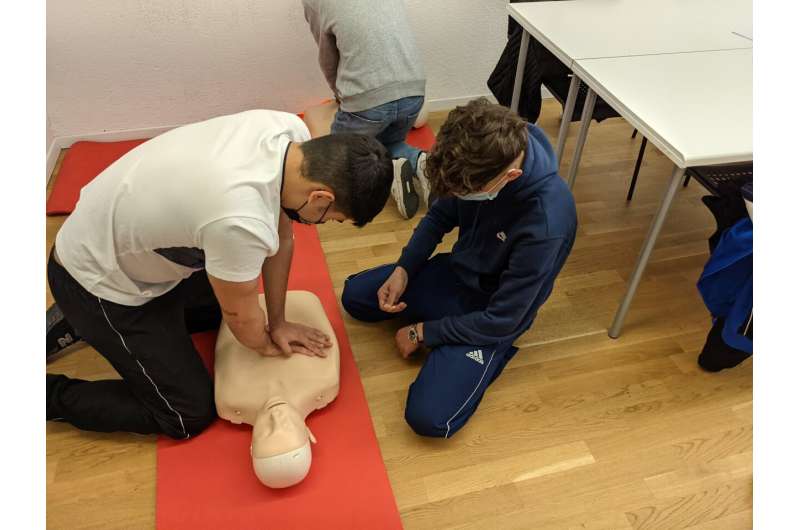This article has been reviewed according to Science X's editorial process and policies. Editors have highlighted the following attributes while ensuring the content's credibility:
fact-checked
peer-reviewed publication
trusted source
proofread
How to improve CPR rates in Australian migrant communities

CPR can double someone's chances of surviving a cardiac arrest in the community, but new research published in BMJ Open finds Australians born overseas lack the support and opportunity to learn. The researchers explore ways to improve CPR training rates.
The odds of surviving cardiac arrest outside of a hospital are low, only around 10%. However, a prompt response from bystanders in delivering cardiopulmonary resuscitation (CPR) or using an automated external defibrillator (AED) can more than double the chances of survival.
New research led by the Westmead Applied Research Center (WARC) at the University of Sydney has found that, while most people would like to know how to perform CPR or use an AED, not everyone feels confident or prepared to respond in a cardiac arrest emergency.
This study published in BMJ Open is the first to examine this issue in-depth in the multiethnic communities of NSW with a focus on some of the large and growing migrant groups. CPR training and willingness to respond were lower among study participants born overseas compared with those born in Australia, the researchers found.
While 77% of Australian-born people surveyed had received CPR training, only 35% of those born in South Asia and 48% of East Asian-born had been previously trained. Overall, only one in five participants had current or recent training—that is in the last 12 months. The importance of refreshing CPR training to retain skills has been emphasized by previous researchers.
"Despite high levels of education among Australian migrants, people we surveyed reported they hadn't had the opportunity to learn CPR in their country of birth," says first author of the study, WARC Project manager and final year Ph.D. candidate Sonali Munot.
"This issue is compounded in Australia, where access to linguistically diverse training resources and CPR awareness campaigns is limited."
Professor Clara Chow, Academic Director of WARC, cardiologist, and senior author of the study, added that other factors such as workplace training and Good Samaritan laws also played a role in the disparity. Australia's "Good Samaritan" laws protect people acting in good faith who apply CPR from potential legal ramifications.
Importantly, the researchers emphasize that lower training rates were not because people were unwilling to learn.
"Across different cultural and socio-economic backgrounds, we found that people who hadn't yet learned CPR were very open to learning, they just hadn't had the opportunity," said Professor Chow.
"This means public health campaigns can easily adapt and customize CPR training modules to boost response rates in these communities."
Some organizations are addressing this need through making resources available online. Ambulance Victoria has CPR and AED training videos in a variety of languages including Mandarin, Cantonese, Arabic, and Hindi, among others. The researchers suggest simple resources like this could be a huge help for multi-lingual and multi-ethnic communities in reducing the number of deaths from cardiac arrest.
Munot added, "It's important to raise even a basic awareness of the effectiveness of early intervention. When it comes to CPR, any attempt is better than no attempt. An AED is also safe and can quite easily be used even by untrained people. You just need to open it and the automatic voice prompts will guide you all along. Prompt actions by public in this time-critical emergency has indeed been shown to positively impact survival outcomes.
"We know that three out of four cardiac arrest events in the community occur at home or in private residential locations, so it is vital that everyone is prepared and feels confident to respond."
More information: Sonali Munot et al, Examining training and attitudes to basic life support in multi-ethnic communities residing in New South Wales, Australia: A mixed-methods investigation, BMJ Open (2023). DOI: 10.1136/bmjopen-2023-073481





















